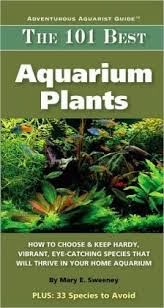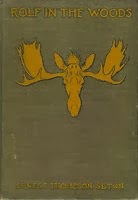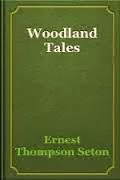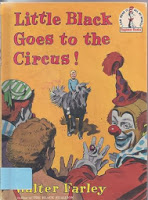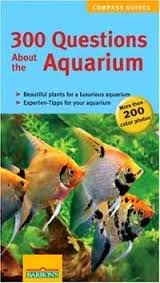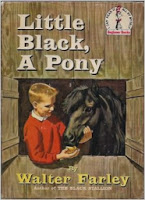by Ernest Thompson Seton
Focus once again on \”woodcraft\” but this time within a story so I enjoyed it more. Rolf is a young man who through confusing circumstances (the beginning of the book was pretty awkward) is left without family and appointed as ward to a cruel man. He runs away and finds refuge with a Native American who lives on the edge of someone\’s land. The locals soon discover where he is and the community religious leader comes calling, insisting that Rolf live with another family, one known to be very strict. But Rolf has discovered how content he is living rough in the woods. Afraid of being apprehended and forced into civility, he and Quonab pack up and strike out into the wilderness to make their own home.
I found it quite interesting that the minister was horrified at the idea that Rolf would be raised by \”a heathen savage\” when throughout the story it was shown that on the contrary, the native man was far more attentive to his own spirituality than most other characters in the story.
So most of the story is about Rolf and Quonab building their cabin in the woods and establishing a trap line. Quonab teaches Rolf survival skills, how to track wildlife and many other things. They explore a lot and have various adventures along with their small, half-trained dog whose activities constantly amused me. There is an enthralling description of huge flocks of wild pigeons, which neatly dated the story for me. They have continual altercations with an unpleasant man who is stealing from their trapline. This culminates with a heightened incident when the man is caught in a bear trap and Rolf in an act of mercy rescues him. He thinks the man will treat them fairly afterwards in gratitude, but this isn\’t the case. The man turns out to be deceitful and cunning as well, but he has a reputation and other men in the wilderness community step in to administer local justice.
This was one aspect of the book I found disturbing. When the man was caught in the trap his agony was highlighted, and the other men rush in alarm to rescue him, nurse him back to health even though he is their enemy. Yet they continually use these instruments to catch wild animals, often describing the animals\’ struggles and torn bodies without any sympathy for their suffering at all.
There is another main storyline about a young, relatively wealthy man who takes to outdoor life for improvement to his health, with Rolf and Quonab as his guide. Rolf and this man find fault with the other at first, for each lacks knowledge in the others\’ area of expertise (woodcraft and book-learning respectively) but soon they learn to like, respect and learn from each other.
The best part of the book is the overall arc of Rolf\’s growth, as his character develops from an overeager boy rather full of himself, into a young man full of skill and integrity. But unfortunately I lost interest at the end of the book, just when Rolf came into his glory. As one circumstance builds upon another, Rolf and Quonab are enlisted as scouts assisting in the American struggle for independence. So there is a lot of historical battles, names and places suddenly taking over what was an individual story. I\’m sure some readers would find this thrilling, but for me Rolf got lost in the bigger events and I ended up just skimming the last quarter of the book, to know what happened in the end.
Abandoned 373 pages, 1911
